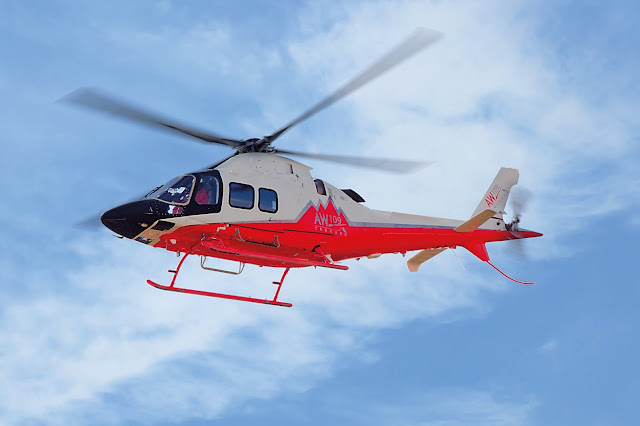HISTORIA
El diseño se inició en julio de 1962, la compañía Messerschmitt Bölkow Blohm (proveniente de Messerschmitt AG, conocida por sus míticos cazas fabricados durante la II Guerra Mundial), había estado trabajando en pequeños proyectos de aeronaves de ala rotatoria; dando lugar a los BO102 y BO103.
BO102 (1959): se trató de una especie de “híbrido” que no podía volar, simplemente se elevaba a una altura máxima de 0,6 metros del suelo y estaba sujeto a una base con articulaciones metálicas para evitar que se pudiera desestabilizar y desplazar de su vertical. Este modelo sirvió como plataforma de entrenamiento para los alumnos futuros pilotos militares de helicóptero, contaba con un cockpit monoplaza y estaba impulsado por un motor de pistón con tan solo 40 CV de potencia que le proporcionaba un MTOW de hasta 325 kg.
Se construyeron 18 unidades, contaba con un rotor de una sola pala, fabricada en fibra de vidrio, y un contrapeso en el otro extremo.
BO103 (1961): fue una versión un poco mayor que el modelo anterior, también monoplaza pero éste ya incorporaba un motor de doble pistón y cuatro cilindros, aunque seguía conservando una única pala de similares características. Llegó a conseguir mantenerse en el aire por tiempo inferior a un minuto, pero no se llegó a fabricar más que el único prototipo.
Tanto el BO102 como el BO103 fueron determinantes para el desarrollo de las palas fabricadas en materiales compuestos del Bölkow, además del diseño inconfundible de los rotores rígidos tan característicos de los helicópteros del antiguo fabricante MBB; la cabeza de titanio en forma de estrella de cuatro brazos de los BO105 y BK117, que actualmente siguen en producción para los EC145 y H145 (con una cabeza lógicamente de mayor dimensión frente al pequeño Bölkow, puesto que estos helicópteros de la familia BK117 son de un tamaño superior: clase de 4 toneladas).
Incluso aquellos proyectos iniciales sirvieron como precursores de los contrapesos pendulares (System Bölkow) que montan en cada una de las palas.
Hay que mencionar al BO104, que fue un proyecto de helicóptero biplaza con rotor principal rígido y dos motores con una potencia de 120 CV c/u. Éste no llegó a pasar de la fase de diseño ya que inmediatamente se sustituyó por el BO105.
MBB BO105 Bölkow
Como comentamos, el proyecto se inició en el año 1962 a través de la experiencia en los rotores que adquirieron los ingenieros de MBB a partir de aquellos pequeños BO102 y BO103 anteriores. El primer prototipo del Bölkow (denominado V-1) montaba dos motores Allison T63 y el rotor articulado (recordamos, del helicóptero británico Westland Scout) que no llegó a funcionar.V-2: Exteriormente el segundo prototipo fue bastante parecido a tal y como conocemos al BO105 que lleva operando estos 51 años, variando en motorización, las puertas traseras eran de apertura normal (no deslizantes), y en todas ellas (cockpit y cabina) la ventana abarcaba la totalidad de su estructura, exceptuando lógicamente los marcos. La cúpula de los motores era completamente diferente, ya que tenía sólo dos salidas de escape en vez de las cuatro características, y estaban situadas a ambos lados del fuselaje (a la altura de la unión de la estructura monocasco con la cola).
Con respecto a su planta motriz ha ido recibiendo actualizaciones y se han fabricado diferentes versiones, pero ha mantenido el característico rotor rígido en forma de estrella de cuatro brazos forjado en titanio monolítico.
El prototipo V-2 realizó su primer vuelo el 16 de febrero de 1967 en Ottobrunn (al sureste de la ciudad de Múnich).
El Bölkow ha sido y perdura como el primer helicóptero ligero bimotor de turbina, además del más pequeño. Esto provocó una gran expectación durante su presentación, ya que permitía regresar a base en caso de fallo en uno de sus turboejes, lo que convirtió al BO105 en el multirole ligero perfecto, sobre todo en misiones offshore y operaciones militares.
El tercer prototipo (V-3) montaba dos turboejes MAN 6022 (MAN Turbo GmbH) que le proporcionaban una potencia de 2 x 375 CV. Éste realizó su primer vuelo el 20 de diciembre del mismo año (1967).
El diseño de sus palas en materiales compuestos, una tecnología revolucionaria por aquel entonces, se realizó en conjunto con el fabricante francés Sud Aviation (antesala de la antigua Aérospatiale), que además había montado el rotor rígido del Bölkow en un Alouette II durante el desarrollo de las mismas para probar su comportamiento en vuelo. De esta colaboración entre ambos fabricantes, fusionados desde 1991 en la división Eurocopter (desde el 1 de enero de 2014 Airbus Helicopters), el francés incorporó el concepto de las palas en materiales compuestos al SA340 “Gazelle” (con rotor principal de tripala, y que volaría por primera vez el 7 de abril de ese mismo año, 1967).
Tal vez a raíz de esta colaboración también saldría el prototipo BO106, ya que la similitud con el SA316/319 Alouette III en la disposición de las plazas (3 delanteras y cuatro traseras en dos líneas de asientos, gracias a un ensanche de cabina y cockpit de 50 cm) era la misma, pero este modelo de MBB no pasó de la fase de prototipo (aunque sí se llegó a construir una unidad que realizó su primer vuelo en septiembre de 1973).
El BO105 con motores Allison 250-C20 no voló hasta el 1 de mayo de 1969, instalados en el cuarto prototipo (V4) y que daría lugar al BO105 C, aunque MBB lo ofrecería en dos versiones, con motorización Allison 250-C18 y C20 a partir de la fecha de comienzo en producción (más adelante entraría la C20B)...
Texto basado en la historia del Bölkow, extraído del Hlcopters Magazine n°6, para descargarlo pulsa aqui
























